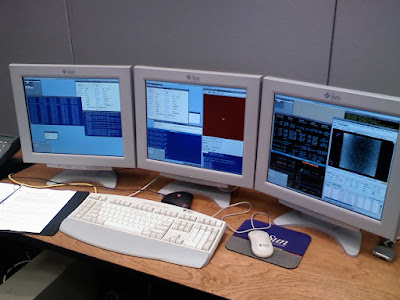MAINFRAME COMPUTER
- SUPER COMPUTER
- WORKSTATION COMPUTER
- TOWER COMPUTER
- The term refers to a computer in which the power supply, motherboard, and mass storage devices are stacked on top of each other in a cabinet. This is in contrast to desktop models, in which these components are housed in a more compact box. The main advantage of tower models is that there are fewer space constraints, which makes installation of additional storage devices easier.
-
- NOTEBOOK COMPUTER
- An extremely lightweight personal computer. Notebook computers typically weigh less than 6 pounds and are small enough to fit easily in a briefcase. Aside from size, the principal difference between a notebook computer and a personal computer is the display screen. Notebook computers use a variety of techniques, known as flat-panel technologies, to produce a lightweight and non-bulky display screen. The quality of notebook display screens varies considerably. In terms of computing power, modern notebook computers are nearly equivalent to personal computers. They have the same CPUs, memory capacity, and disk drives. However, all this power in a small package is expensive. Notebook computers cost about twice as much as equivalent regular-sized computers. Notebook computers come with battery packs that enable you to run them without plugging them in. However, the batteries need to be recharged every few hours.
-
- LAPTOP COMPUTER
- A small, portable computer -- small enough that it can sit on your lap. Nowadays, laptop computers are more frequently called notebook computers.
-
- SUBNOTEBOOK COMPUTER
A portable computer that is slightly lighter and smaller than a full-sized notebook computer. Typically, subnotebook computers have a smaller keyboard and screen, but are otherwise equivalent to notebook computers.-
- HANDHELD COMPUTER
A portable computer that is small enough to be held in one’s hand. Although extremely convenient to carry, handheld computers have not replaced notebook computers because of their small keyboards and screens. The most popular hand-held computers are those that are specifically designed to provide PIM (personal information manager) functions, such as a calendar and address book. Some manufacturers are trying to solve the small keyboard problem by replacing the keyboard with an electronic pen. However, these pen-based devices rely on handwriting recognition technologies, which are still in their infancy. Hand-held computers are also called PDAs, palmtops and pocket computers.-
- PALMTOP COMPUTER
- A small computer that literally fits in your palm. Compared to full-size computers, palmtops are severely limited, but they are practical for certain functions such as phone books and calendars. Palmtops that use a pen rather than a keyboard for input are often called hand-held computers or PDAs. Because of their small size, most palmtop computers do not include disk drives. However, many contain PCMCIA slots in which you can insert disk drives, modems, memory, and other devices. Palmtops are also called PDAs, hand-held computers and pocket computers
- PDA COMPUTER\
- Short for personal digital assistant, a handheld device that combines computing, telephone/fax, and networking features. A typical PDA can function as a cellular phone, fax sender, and personal organizer. Unlike portable computers, most PDAs are pen-based, using a stylus rather than a keyboard for input. This means that they also incorporate handwriting recognition features. Some PDAs can also react to voice input by using voice recognition technologies. The field of PDA was pioneered by Apple Computer, which introduced the Newton MessagePad in 1993. Shortly thereafter, several other manufacturers offered similar products. To date, PDAs have had only modest success in the marketplace, due to their high price tags and limited applications. However, many experts believe that PDAs will eventually become common gadgets.PDAs are also called palmtops, hand-held computers and pocket computers












No comments:
Post a Comment